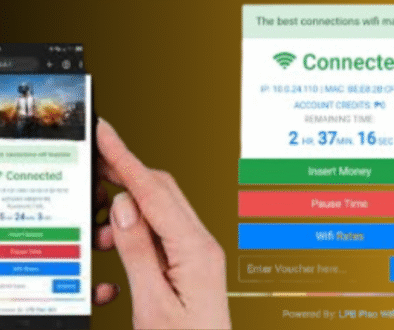Best Five iPhones, five sizes spread over two lines and three ranges
Apple’s single model per year was broken with the arrival of the “Plus” and in recent years this has been expanded, especially this one. 2020 has meant five iPhones, five sizes spread over two lines and three ranges, and the one that concerns us this time is the largest of all in several ways: this is the analysis of the iPhone 12 Pro Max .
A mobile that shares much more than nomenclature with the iPhone 12 Pro : its technical sheet is almost a carbon copy except for the dimensions and subtle differences in screen and camera. Of course, more volume usually means more battery, so let’s see what experience this year’s iPhone colossus gives. But if you are a new iPhone user, then you can see iPhone 14, but at the moment iPhone 14 is not available in the market. However, the price of iPhone 14 pro max and 13 pro max may be slightly different. That’s why you must check the market price before buying the iPhone.
iPhone 12 Pro Max datasheet
| IPHONE 12 PROMAX | |
| SCREEN | 6.7″ Super Retina XDR OLEDRatio 19.5:9FullHD+ at 2,778 x 1,184HDR10458 dpi |
| PROCESSOR | Apple A14 |
| SOFTWARE | iOS 14 |
| CONNECTIVITY AND SOUND | 5G (sub-6 GHz and mmWave)Gigabit LTE with 4×4 MIMO and LAA4Wi-Fi 6 (802.11ax) with 2×2 MIMOBluetooth 5.0NFC |
| VERSIONS | 128GB256GB512GB |
| REAR CAMERA | 12 MP f/1.6 26mm OIS12 MP (tele) f/2.0 52mm OIS12 MP f/1.6 13mm ultra wide angle 120ºLiDAR camera4K@60fps videoRecording in Dolby VisionFront slow motion |
| FRONTAL CAMERA | 12 megapixel f/2.2HDR |
| DRUMS | Fast charging up to 20W (charger not included)MagSafe 15WQi charging 7.5W |
| OTHERS | Face IDProtection IP68 |
| DIMENSIONS AND WEIGHT | 160.8 x 78.1 x 7.4 millimeters228 grams |
| PRICE | 128GB: €1,259256GB : € 1,379512GB: €1,609 |
New Apple iPhone 12 Pro Max (128 GB) – Graphite
Design: the importance of width in the era of large mobiles
As we already mentioned in its presentation and especially when talking about the iPhone 12 Pro, the main change in the iPhone 12 is that it returns to the flat edge and says goodbye to the semi-cylindrical side. Something that may be more or less aesthetically pleasing, but it is a return to the (almost) origins of the product, when this design of the edges was used in the iPhone 4 .
The rear cameras maintain the triangle layout, interspersing the flash and the LiDAR in that square module with curved edges. Going into detail, the lenses of the iPhone 12 Pro Max protrude a little more from its metal frame than on the iPhone 12 Pro.
iPhone 12 Pro on the left, iPhone 12 Pro Max on the right.
It is less bulky than the iPhone 11 Pro Max despite including a larger diagonal screen, but it weighs a little more
The Max lives up to its name by being the largest in its class. Although beware, it is less bulky than the iPhone 11 Pro Max despite being taller and including a larger diagonal screen, thanks to the fact that it is slightly thinner. Of course, it weighs two grams more.
| HEIGHT (MM) | WIDTH (MM) | THICKNESS (MILLIMETERS) | WEIGHT (GRAMS) | SCREEN (INCHES) | DRUMS | SURFACE (CM2) | VOLUME (CC) | |
| IPHONE 12MINI | 131.5 | 74 | 6.42 | 133 | 5.4 | 2,227 | 97.31 | 62.47 |
| IPHONE 12 | 146.7 | 74 | 7.15 | 162 | 6.1 | 2,815 | 108.99 | 77.62 |
| IPHONE 12 PRO | 146.7 | 71.5 | 7.4 | 187 | 6.1 | 2,815 | 104.89 | 77.61 |
| IPHONE 12 PROMAX | 160.8 | 78.1 | 7.39 | 228 | 6.7 | 3,687 | 125.58 | 92.80 |
| IPHONE 11 PROMAX | 158 | 77.8 | 8.1 | 226 | 6.5 | 3,969 | 122.92 | 99.57 |
It is therefore a large and heavy mobile , being the heaviest of the main flagships of this year, but despite appearances it is almost the least bulky of these. The elongated Sony Xperia 1 II is the lightest and most compact of these, but at the volume level the Pro Max is right between it and the rest, being above all higher than Apple’s.
| HEIGHT (MM) | WIDTH (MM) | THICKNESS (MILLIMETERS) | WEIGHT (GRAMS) | SCREEN (INCHES) | DRUMS | SURFACE (CM2) | VOLUME (CC) | |
| IPHONE 12 PROMAX | 160.8 | 78.1 | 7.39 | 228 | 6.7 | 3,687 | 125.58 | 92.80 |
| ONEPLUS 8 PRO | 165.3 | 74.35 | 8.5 | 199 | 6.78 | 4,510 | 122.9 | 104.47 |
| HUAWEI MATE 40 PRO | 162.9 | 75.5 | 9.1 | 212 | 6.76 | 4,400 | 122.99 | 111.92 |
| SAMSUNG GALAXY S20 ULTRA | 166.9 | 76 | 8.8 | 220 | 6.9 | 5,000 | 126.84 | 111.62 |
| PIXEL 4XL | 160.4 | 75.1 | 8.2 | 193 | 6.3 | 3,700 | 120.46 | 98.78 |
| LG V60THINQ | 169.4 | 77.7 | 8.9 | 219 | 6.8 | 5,000 | 131.62 | 117.15 |
| SONY XPERIA 1II | 165.1 | 71.1 | 7.6 | 181.4 | 6.5 | 4,000 | 117.39 | 89.21 |
| XIAOMI MI 10T PRO | 165.1 | 76.4 | 9.33 | 218 | 6.67 | 5,000 | 126.13 | 117.69 |
iPhone 12 Pro Max below (blue) and iPhone 12 Pro above (gold).
In fact, if we are already used to 6.7-inch smartphones (and based on the average of recent years, it would not be surprising), the iPhone 12 Pro Max will not seem particularly large or thick, but wide (it is less elongated than the rest, so to speak). And this width makes the grip less comfortable than phones that are taller but narrower , like the Xperia we were talking about or the OnePlus 8 Pro .
Although what most affects the grip sensations in this case are the weight and the edges. As it already happened to us with the iPhone 12 Pro, we believe that the previous design is more comfortable and ergonomic , although it is true that the leather case is much more pleasant than the transparent one and helps to soften the edges (which is not that they bother or are nailed).
Despite being the largest of the four iPhones this year, the buttons are equally well placed . We are talking about the two volume ones, on the left side next to the silent mode (another apparently immortal house brand) and the power button, on the other side.
No Touch ID or any other button, the Face ID crowning the front as in the rest of its brothers and without changes in the size of the notch .
The earpiece and secondary speaker are also housed in that notch, which together with the main speaker on the base provides the stereo sound that we will talk about later. The screen fits into a vertically symmetrical frame, with sides of the same thickness (except for the notch ).
Of course, they are not particularly thin, seeing what the competition achieves, although on the other hand the screen does not have curvatures either (something that we usually celebrate).
The back maintains the matte finish on the glass that we already saw on the iPhone 11 Pro and 12 Pro, which prevents fingerprints from remaining . They do remain easily on the aluminum edge, in gloss, although luckily not on the lenses.
On the aluminum edge we also see the CE marking as a change in this year’s edition, as well as the transfer of the nanoSIM tray to the left side. And both physical buttons such as the Lightning port and the rest of the base elements are perfectly aligned to the center of the edge.
Screen: Apple is not yet in the battles of hertz or “dpi”
As we saw in the iPhone 12 Pro, the evolution of the panels had been quite contained and in fact we see in the Max a twin screen to that of its younger brother. It is a 6.7-inch Super Retina XDR OLED with a resolution of 2,778 x 1,284 pixels , leaving a density of 458 pixels per inch.
They are neither a density nor a resolution competitive with the most ambitious in this regard, although as with other high-end phones that remain in FullHD +, the experience is good in terms of sharpness. In fact, if we are sensitive to this aspect, we will notice more definition than in mobiles such as the iPhone SE (2020) or the OnePlus 8T .
Contrast is adequate (2,000,000:1 ratio) and so is the brightness level, with 800 nits typical and 1,200 nits maximum . In full sun the screen looks good, although the brightness peak does not seem to be activated in a standard display (social network, etc.) and the more the sun shines, the reflection of the screen may bother a little. Of course, the automatic brightness adjustment behaves quite well in general, and the minimum brightness could be even lower.
IN XATAKA
This is what nits are for: comparison of mobile screens in full summer sun
The screen is calibrated with a somewhat cold color temperature, which can be solved by activating True Tone (iOS already offers it to us in the preliminary configuration).
In our experience, it is worth leaving it activated, especially if we usually stay with the clear theme, but although it achieves an adequate temperature, the screen settings that we see in the Android customization layers may be missing .
In them we also see options that favor interaction with the terminal, such as lifting to activate , in addition to the little that we can adjust at the visualization level. We can change the size of the elements (larger), of the text and choose the system theme (light or dark) and if we want the automatic brightness. But as we can see, they are quite brief if we take into account what we usually see in the Android customization layers .
The touch sensitivity is adequate, both in active mode and in sleep mode (when waking it up), and the display is always correct regardless of the viewing angles.
And another positive aspect is that the saturation of the colors is also at a correct level , which is somewhat appreciated as it cannot be adjusted manually.
Speaking of the use of the front by the screen , the iPhone has not broken records either and the Pro Max is the umpteenth sample. With frames of about 2.6 millimeters and a notch of about 7.2 millimeters, the screen uses 87.4% of the front surface according to GSM Arena , which fits in with the current average of mobile phones without curvature on the screen. like the Huawei P40 or the OnePlus 8T.
Of course, although aseptically it is not a bad figure, the feeling of “all screen” is achieved less than in panels with a hole for the front camera and curves, as in the Samsung Galaxy S20 Ultra.
Although at the level of handling, display (without side shadows) and interaction, flat screens usually give a better experience.
The “notch” and the curvature causes some elements to be covered, although we have always been able to tap on everything (images of the menu and a game of ‘PUBG’).
Another aspect that we have not commented on is the refresh rate, since Apple maintains 60 hertz at the moment in all its terminals. It is something that is usually more noticeable in video games and that may not be important for all users, in fact we do not have a bad experience with the panel or penalize scrolling , but it should be emphasized when seeing that it is a growing trend in the industry and that in Android mobiles the rates of 90 and 120 Hz are beginning to be normalized, even in the mid-range.
Performance: Hassle-free to move any task
Equal conditions in all the new iPhone 12 at the processor level. The brand remains opaque in the matter of revealing the RAM, but details were given about the Apple A14 Bionic , the new processor that the iPad Air (2020) already released .
This chip is theoretically 16% more powerful than the previous one and also brings 5G support. The benchmarks (whose results we will see below) tell us that this mobile also has 6 GB of RAM , like the iPhone 12 Pro, which is 2 GB more than what we saw in the iPhone 11 Pro Max.
Beyond numbers, what we have seen is that the iPhone 12 Pro Max, like the other Pro, can handle everything and shows no lag or signs of insufficient hardware.
We have been able to play, watch multimedia content or edit video with iMovie without problems and with fluidity always, in fact we have been surprised how well the ‘PUBG’ menu moved (very heavy in general).
At the temperature level , we notice that it heats up less than the 12 Pro. The heat on the back begins to be noticeable after about 7-10 minutes of play (‘Asphalt 9’, ‘PUBG’, etc.), but it is slight and it does not attract attention or bother (and with a cover it is imperceptible).
It does stand out when resorting to augmented reality apps , as we also saw in the 12 Pro and in the iPad Pro, so although it works well, it may not be convenient to spend hours with that level of hardware demand.
LiDAR is used especially if we use augmented reality apps. Floor and other surfaces are detected very quickly and work very well, although this stress on the hardware causes a temperature rise that seems even higher than when charging the device.



